
New Generation Claims the Record
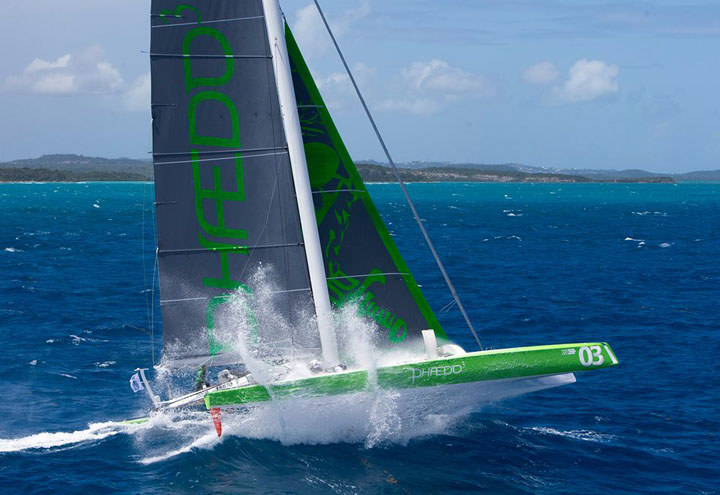
As if the RORC Caribbean 600 needed any more pizzazz to elevate itself on the world racing scene, it got a huge boost when 35-years-young Lloyd Thornburg of St. Barth/Santa Fe/Newport Beach/Not Sure Where Else, showed up a couple of days before the start with the brand-new-to him lime green MOD70 trimaran Phaedo3. Then, with the aid of sailing greats such as Michel Desjoyeaux and Brian Thompson — the latter known to many Bay Area sailors for his time on Steve Fossett’s ORMA trimaran Lakota and maxi catamaran PlayStation — finished in 33 hours, 35 minutes.
The record run was at an average of 17.9 knots and crushed the old record, set by the ORMA 60 trimaran Region Guadeloupe, by 6.5 hours. As big and powerful as the MOD70s are, most sailors may not realize how sensitive they are. One flipped in less than 20 knots of wind, so the helmsman and those on the sail controls must be constantly vigilant. We’ve sat on the windward net of a MOD70 at 34 knots, and it takes a lot of effort to not be bounced overboard.
An enthusiastic Thornburg, who shared driving duties with Desjoyeaux and Thompson, said Phaedo3’s future plans include the Heineken Regatta, Transatlantic Race and the Fastnet Race, the latter being one of the three other great middle-distance ocean races in the world. We’ve been sworn to secrecy, but we know for a fact that Phaedo3 will be racing in yet another major Caribbean regatta after the Heineken and before the Transatlantic. The tri may need a refit before the start of the Fastnet.
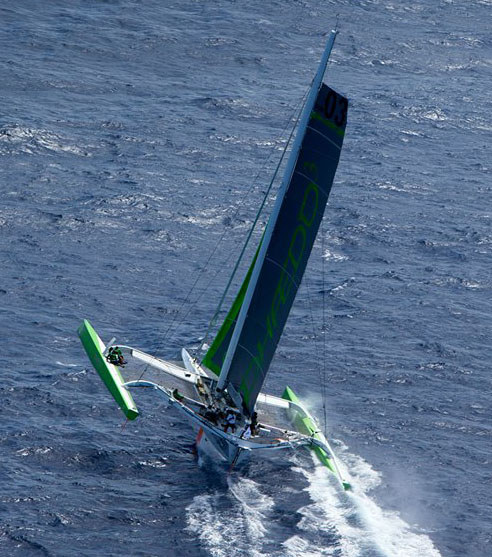
Thornburg had previously raced his other multihull, the Gunboat 66 catamaran Phaedo in the Transatlantic and in the Fastnet, and is well known for having sailed her 428 miles in 24 hours in the 2013 Transpac before being dismasted. Thornburg not only still owns the Gunboat, he had her meticulously refit and upgraded over the last two years in Newport Beach.
Thanks to Ocean Images, the Thornburg-hired film crew, there is unprecedented great footage of the blisteringly fast trimaran screaming along in the idyllic sailing conditions of the Caribbean. Pump it up! This will only raise the profile of the great event even higher, as well as that of racing in the Caribbean and the MOD70s.
The Carib 600, however, was more than the Phaedo3 show, as it attracted a terrific fleet of 66 boats and many hundreds of hardcore racers ready to battle the Caribbean trades. To give an idea of how strong the fleet was, there were 21 yachts racing IRC Zero and Canting Keel, which organizers said made it the finest fleet ever to race in the Caribbean.
The race included the much-awaited debut of hardcore racer George David’s new Juan K-designed Rambler 88, which replaces his R/P Rambler 92 and Juan K Rambler 100. Because of light air the second day, Rambler missed the monohull course record and corrected out third in IRC. Overall IRC honors went to Hap Fauth’s JV 72 mini-maxi Belle Mente, which was spectacularly dismasted during the start of one of the Voiles de St. Barth races last year. Both boats, plus a surprise entry, will be around for this year’s Voiles de St. Barth in April.
But the Carib 600 wasn’t just lightweight flyers. Adela and Athos, two great schooners, went at it again this year. Adela, originally from 1903, is 182 feet. Athos, a recent Hoek design, is 205 feet. With Adela still on the course, Athos has had to drop out. To give you an idea how hard racing these babies can be, Shag Morton, last year’s skipper on Adela, reported they made close to 50 sail changes.
San Francisco’s Peter Aschenbrenner took second in the multihull division with his Irens 63 Paradox, which is a cruising version of an ORMA 60. Doug Baker’s Kernan 47 True, from Long Beach, still had 150 miles to go, and wasn’t doing particularly well in conditions that weren’t really to the boat’s liking.
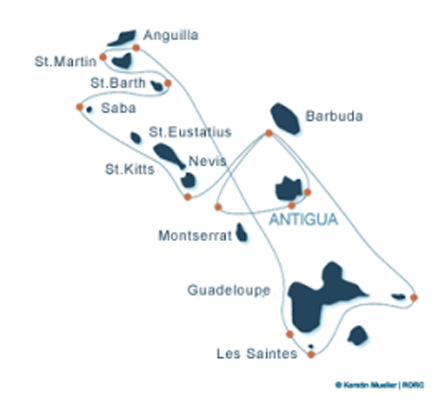
Search for Missing Princess
The Coast Guard has asked us to reach out to our readership regarding the search for Richard Byhre, a 76-year-old sailor who did not return from his sailing trip as expected, and his dark blue 28-ft Catalina sloop Princess, homeport San Diego.
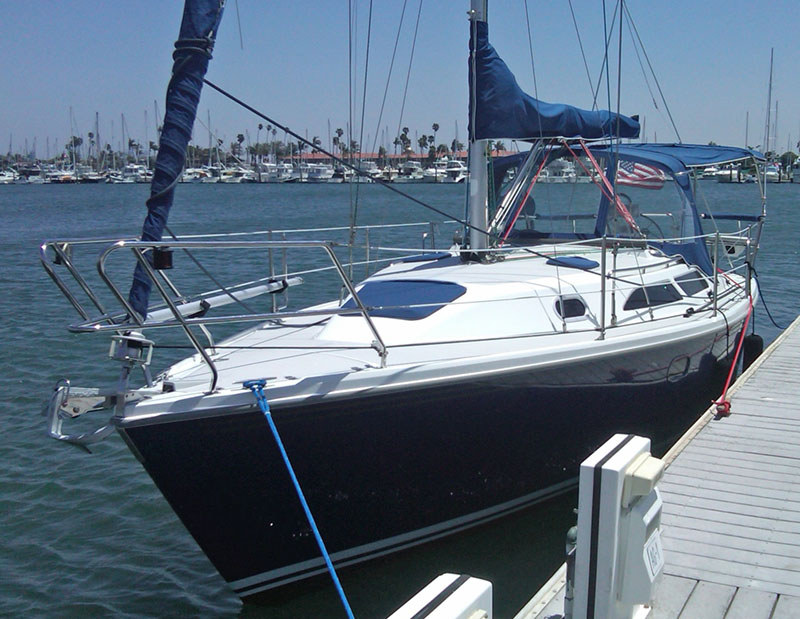
At 9:00 p.m. Saturday, watchstanders at the Coast Guard Joint Harbor Operations Center in San Diego received a report from Byhre’s wife reporting that he had not returned from sailing last week. The Coast Guard immediately launched a Station San Diego 33-ft Special Purpose Craft — Law Enforcement boat crew to search for Byhre. San Diego Harbor Patrol crews also searched for Byhre.
On Sunday, a Coast Guard C-130 aircrew from Air Station Sacramento completed multiple searches of the waters 30 miles west of Ensenada and 60 miles south of Rosarito, Mexico. Additionally, an MH-60 helicopter aircrew from Coast Guard Sector San Diego completed a search along the waters off the U.S. and the border of Mexico. The Coast Guard Cutter Edisto was diverted to remain on scene and conduct searches throughout the evening.
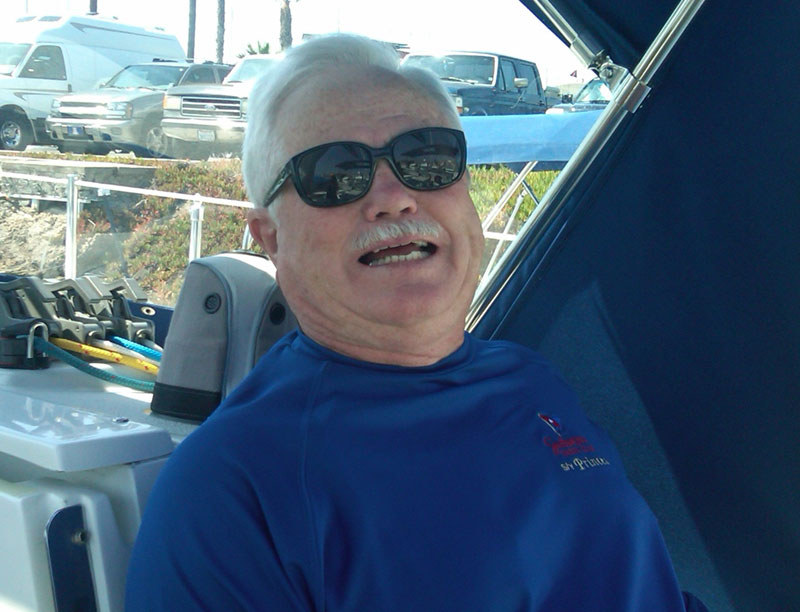
"Mr. Byhre left his home in Palm Desert on Tuesday, February 10, and the last credit card activity was in Pt. Loma on the same day," writes OSCS Douglas Samp of the USCG District 11 Command Center in Alameda. "Southwestern YC in San Diego noticed Princess missing from the slip on Sunday, February 15, and his Toyota Prius is still parked there." The search area expanded to the Channel Islands south almost to Turtle Bay.
"Any person having information on Mr. Byhre’s voyage or whereabouts is requested to contact Rescue Coordination Center Alameda at (510) 437-3701 or email [email protected]," said Samp.
Latest from the AC Rumor Mill
Is the sailing empire that was once Emirates Team New Zealand beginning to crumble? The principals are remaining tight-lipped, but the circumstantial evidence and rampant speculation — all you ever need for juicy America’s Cup controversy — make for some pretty interesting reading of late.
The cracks in the foundation started to appear a couple of weeks ago when longtime TNZ skipper Dean Barker learned — by reading it on Facebook — that he was being replaced as helmsman by Peter Burling.
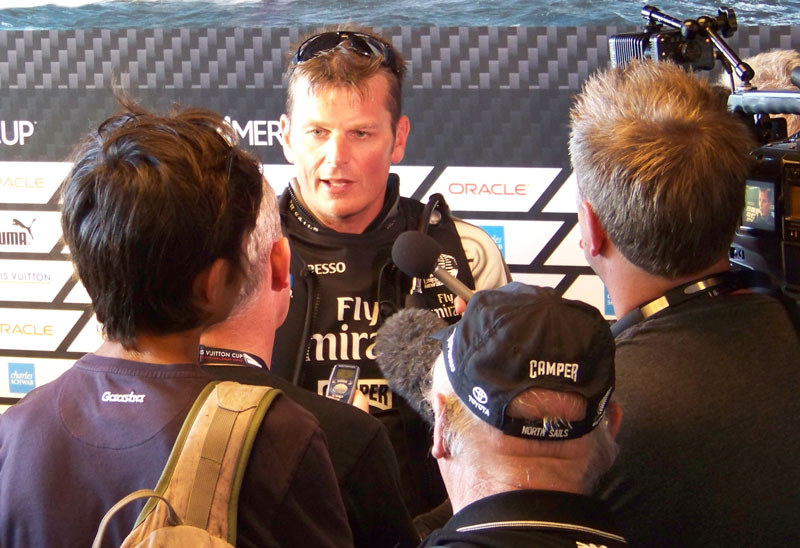
©Latitude 38 Media, LLC
It is no secret that Kiwi wunderkind Burling was hired by ETNZ a year ago. But the question of who will helm the next generation of 62-ft foiling cats at AC35 in Bermuda in 2017 was supposedly still undecided.
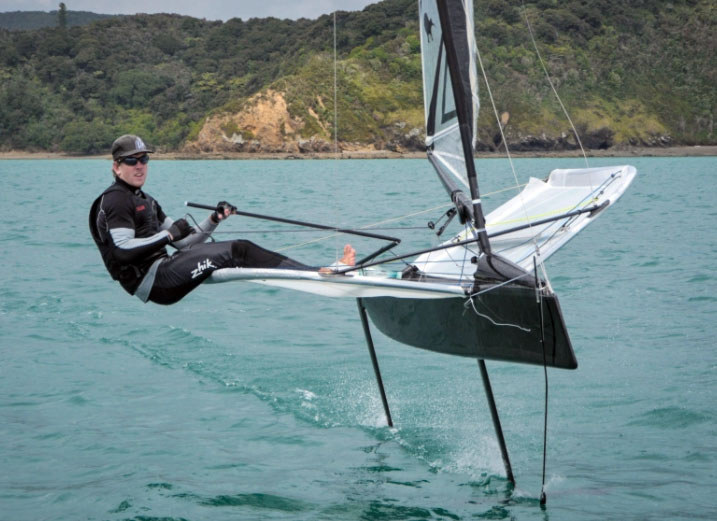
It is also no secret that there has never been any love lost between Barker and syndicate head Grant Dalton. Barker has never said it in so many words, but he has often alluded to Dalton’s making less-than-stellar decisions without consulting him (Barker) or other key players. Just one example is Dalton’s insistence on taking one of the grinder spots on ETNZ’s AC72 during their ignoble and embarrassing defeat at the hands of Oracle Team USA in the last America’s Cup in San Francisco in 2013.
Now, apparently, Barker feels that Dalton has — once again — gone behind his back. This after Dalton said just this January that “Dean will very much be involved with the decision” as to who would helm the new boat.
The latest reports a few days ago indicate that Barker has even hired lawyers — generally not a good sign but, again, par for the course in the America’s Cup. They have demanded a “formal explanation” of his treatment by ETNZ.
The crazy part is that, by all indications, Barker seemed to be fine with the possibility of relinquishing the helm to Burling, who among other things won an Olympic silver medal in 49ers in 2012 and the International Moth Worlds in January. Barker also appeared good-to-go with the ongoing restructuring of ETNZ, including the roles he, Dalton, and other top brass would have in the next America’s Cup.
But to be kicked to the curb with no warning may have been the last straw for the 42-year-old Barker.
The buzz now is that if this rift can’t be patched up, Barker will stay only if Dalton steps down.
What the departure of either man would mean to the future of ETNZ is unclear. Dalton, who replaced Sir Peter Blake as syndicate head in 2003, is an almost mythical figure in New Zealand, having competed in seven round-the-world races, including helming the winning 110-ft catamaran Club Med in 2001’s The Race.
Barker has been sailing as a helmsman with Team New Zealand for 20 years, which if we’re not mistaken makes him the second most ‘faithful to the home team’ skipper in AC history, behind only Dennis Conner. He was first invited to join the 1995 team (to drive the "B" boat) by Russell Coutts, and took over as team captain when Coutts defected to Alinghi after the 2000 Cup.
But three America’s Cup losses in a row — and especially that last one when Oracle recovered from an eight-race deficit to win — has made fundraising an increasingly tough sell for ETNZ. It will be interesting to see if, and how, a rift of this magnitude will affect New Zealand’s participation in the next Cup.
Oh, and speaking of crazy, the latest gossip making the rounds is that Barker is being courted by Italy’s Luna Rossa Challenge. Both sides deny the rumors.
Zen Sailing Again
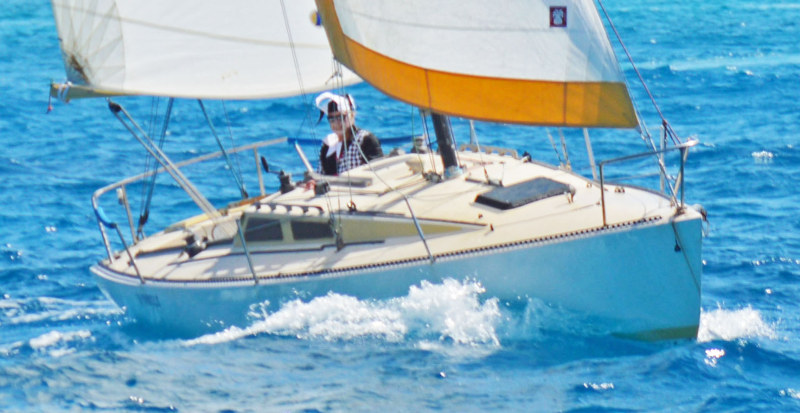
©2015Latitude 38 Media, LLC
We can’t think of a more pure Zen boating experience than sailing in the tropical breezes of the Caribbean on a fast boat without an engine. If you have a good boat in the Caribbean, you need an engine as much as you need a hole in your hull. The wind always blows. Always.
The Wanderer achieved total Zen sailing consciousness in the accompanying photo, which was taken during the St. Barth YC’s Carnaval Sail on February 14. Dressed as The Joker for the event in which costumes are mandatory, we were sailing the Olson 30 La Gamelle that we had used for a full season of Zen sailing on San Francisco Bay. It is possible to Zen sail on San Francisco Bay, but because it can be cold, and because calms and adverse currents mean you sometimes need an engine, it’s more challenging to become one with the water and the wind.
Our sail back to the Corossol anchorage after the Carnaval party at Columbie was as good as the sail there. It was warm, the orange sun was falling into a cloud-speckled golden horizon, and we were sailing to weather with a full main and #4 — La Gamelle’s only sails — in about 10 knots of breeze. It wasn’t our intent, but La Gamelle was effortlessly passing boats left and right. Small wonder sailors on St. Barth keep asking us to sell La Gamelle.
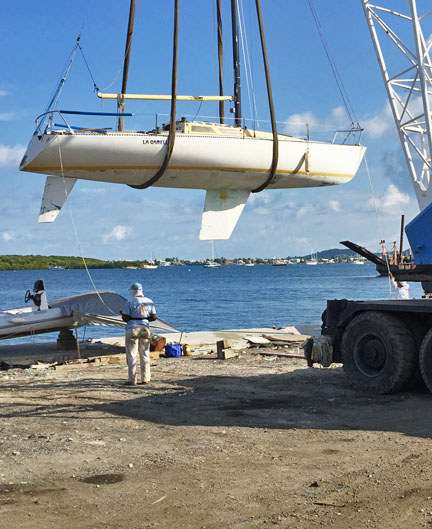
©Latitude 38 Media, LLC
Of course, nothing in sailing is as easy as it might seem, as there was more than a little work involved in achieving those Zen sailing states. First, the week prior, we’d had to launch La Gamelle from the St. Martin Shipyard, where she had spent the offseason. About a third of the boats in the yard had been damaged, some of them extensively and/or beyond repair, by October 13’s hurricane Gonzalo. Gallant La Gamelle, perhaps because of Santa Cruz designer/builder George Olson’s karma, went unscathed.
The first job each season with La Gamelle is pumping all the water out, usually about 30 gallons. There is just no keeping the torrential rain out, so we’ll probably just drill a big hole in the bilge for the next offseason. Then we have to get rid of the perhaps 10,000 flying bugs. What we wondered, was the deal with all the tea bags broken open throughout the bilge? De Mallorca later informed us they weren’t tea bags, but rat bait. Then there was the matter of getting rid of the incredible amount of mold on the inside. If we were in Mexico, there would be 10 guys in line to stoop for an afternoon to de-mold the boat for less than $10 an hour. If you could even find someone to demean themselves to do such work in St. Barth, it would cost $40 an hour. So the mold job has been postponed. But it’s not quite as bad as it seems, because we never go inside the boat.
It’s always comical to watch La Gamelle being launched, because the yard lifts the 3,000-lb boat and lowers her into the water with an ancient 90-ton crane. Overkill to the max. La Gamelle is easily the smallest boat in the yard, and was perhaps a nuisance, as they’ve had to repeatedly move her around in order to launch other boats. But she’s cute, so we think that even the grizzled yard workers kind of like her.
Once La Gamelle was in the water, we had to take her through the Simpson Bay Causeway, which only opens every few hours, then wait another 15 minutes for the opening of the Simpson Bay Lagoon Bridge to the Caribbean Sea. How does La Gamelle get around without a motor? The Wanderer pushes La Gamelle, with de Mallorca at the helm, using ‘ti Profligate’s 12-ft AB inflatable and 15-hp Yamaha. La Gamelle even hauls butt when being pushed. As we went in circles waiting for the bridge to open, we passed by the moderately large motor yacht built for Steve Jobs, a boat he never saw. We’re huge fans of Apple products, but not so much of Jobs’ motor yacht.
It took us forever to get through the bridge because the ultraconservative captain of the lead megayacht insisted on passing through the narrow bridge opening at about one quarter of a knot. Other captains with much less clearance have been known to charge through at 5 knots or more, blessed as they all are with forward and aft thrusters.
Once out in the Simpson Bay anchorage, which was rolling like crazy and where we were surrounded by 150-ft-plus yachts, we had to anchor La Gamelle. Then we had to use the dinghy to ferry load after load of the stuff we store on La Gamelle in the offseason over to ‘ti Profligate. If you’ve never repeatedly climbed onto and off of a madly rolling Olson 30, it’s a lot of work, particularly when you’re collecting Social Security. De Mallorca was no help, because she had to check out with the bridge and Immigration officials, who were uncharacteristically friendly this year.
Once we got all the junk off La Gamelle, we had to connect two tow lines, secure the tiller on center line, raise her anchor, lift the dinghy in the davits, weigh ‘ti Profligate’s anchor, make the 20-mile upwind tow to St. Barth, then reverse the process once we found a spot with enough room for two boats. We know it sounds like nothing, but at the end of the day, we were so tuckered, and every bone and muscle was in such agony, that we suspected we’d contracted the dreadful Chikungunya virus that’s swept the Caribbean.
And then before we able to sail La Gamelle, we had to bend on the sails, find new jib sheets, weigh anchor, and issue a fervent prayer to the rod-rigging gods that the rig would last another season.
The is all a long way of saying that it’s sometimes harder to achieve Zen sailing consciousness that it might seem. But trust us, it’s worth it.
